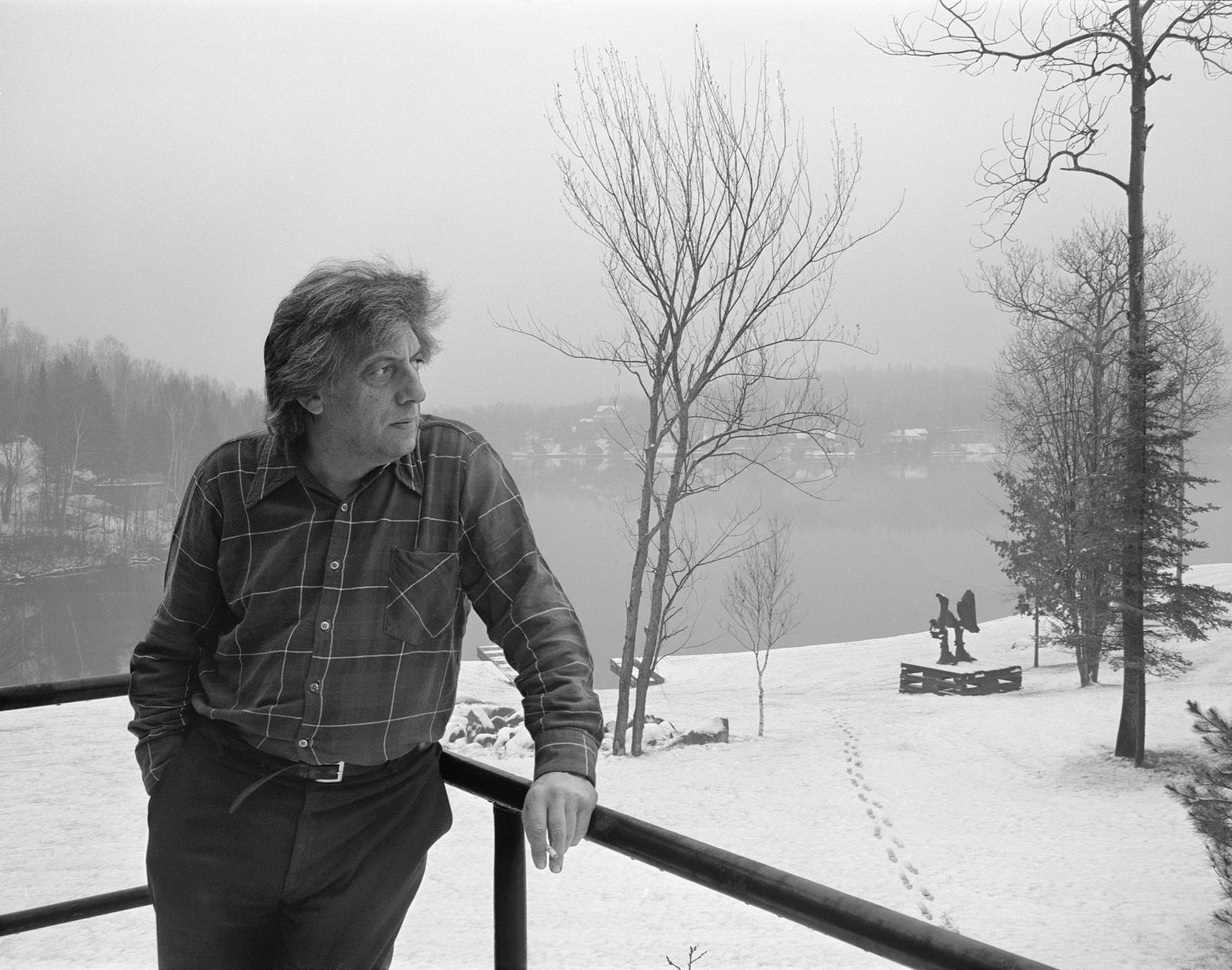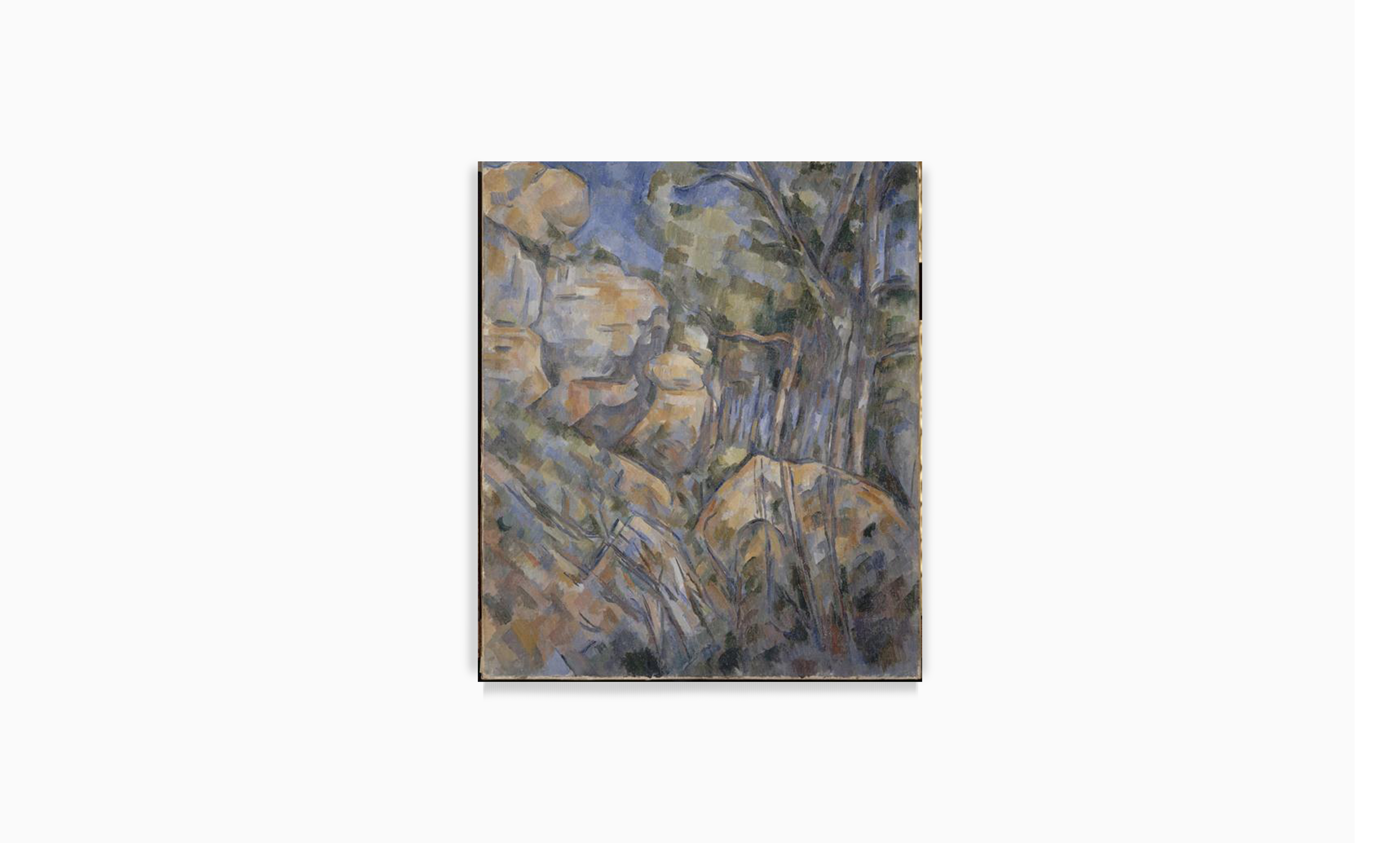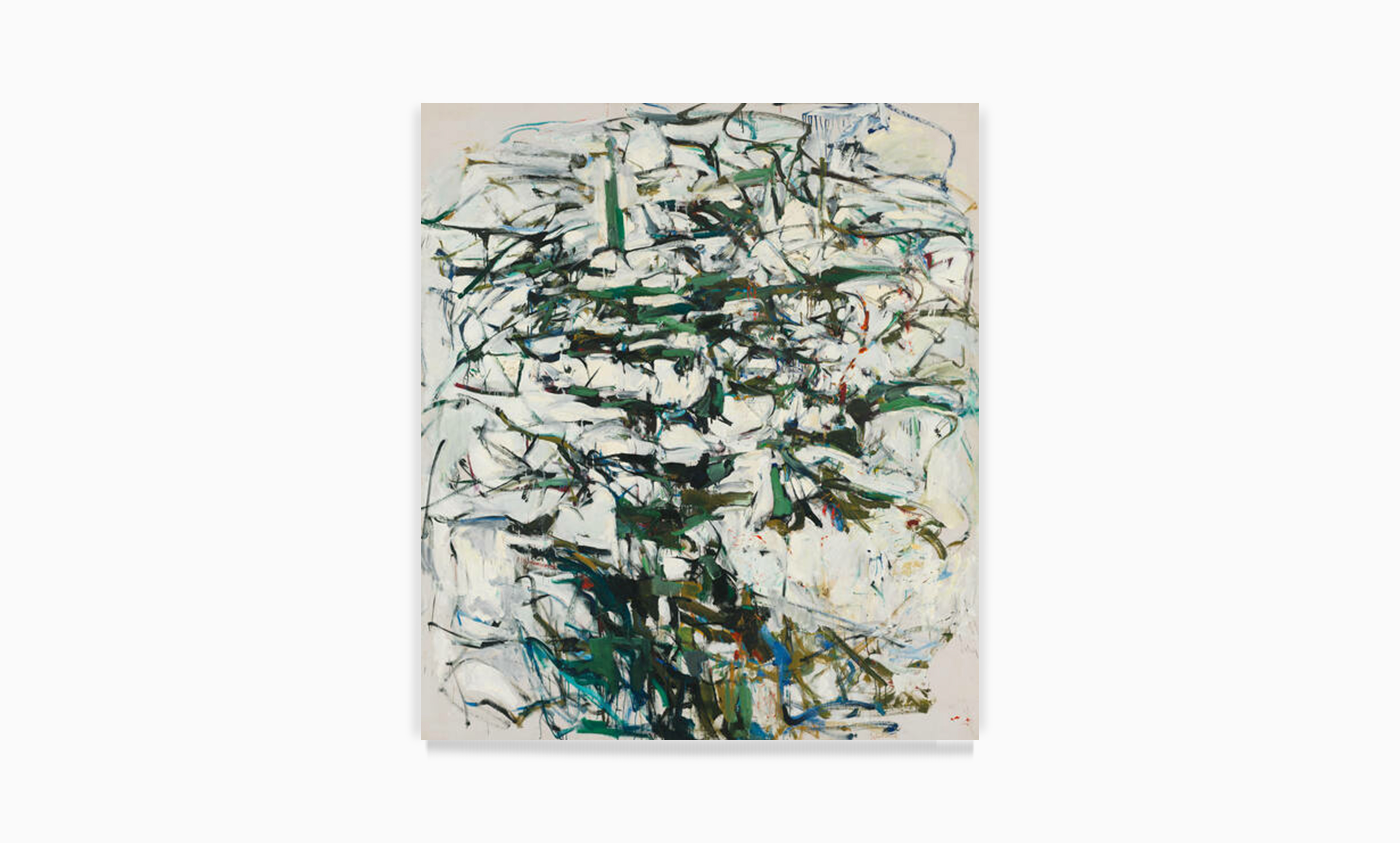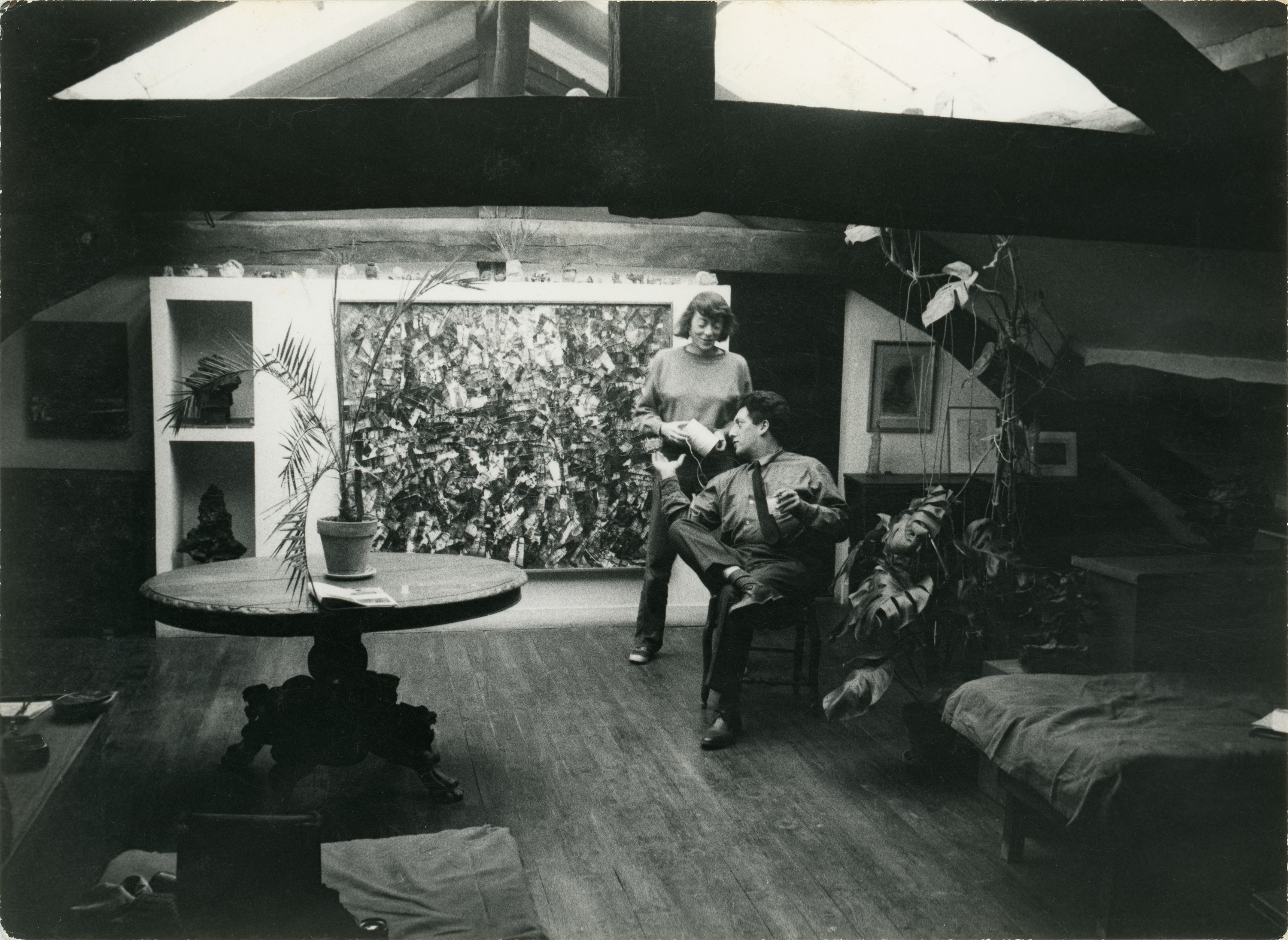Jean-Paul Riopelle (1923 – 2002)
C’est Rocheux, 1974
Oil on canvas
81 x 100 cm | 31 7/8 x 39 5/16 inches
Signed and dated on the bottom right : “Riopelle 74″
Reproduced in the catalogue raisonné p.143 under n°1974.050H.1974
Jean-Paul Riopelle’s art is an intimate experience, inviting viewers to feel the cold, hear the rustle of nature and sense the immensity of the landscape and the light that shines through it. He transcends traditional representations of nature to convey the impact and deep emotional attachment he feels for his native land. It is from this predominant nature that he draws his inspiration. The Galerie A&R Fleury has chosen to present “C’est rocheux” as a tribute to the centenary of the artist’s birth, because it perfectly expresses his attachment to winter landscapes and testifies to his pictorial boldness.
This work is to be discovered at the gallery amongst a selection of works by foreign artists who have lived in Paris and who have also distinguished themselves through their singular approaches to abstract art.
C’est Rocheux, 1974
Oil on canvas
81 x 100 cm | 31 7/8 x 39 5/16 inches
Signed and dated on the bottom right : “Riopelle 74″
Reproduced in the catalogue raisonné p.143 under n°1974.050H.1974
“Throughout his career, Riopelle literally embraced matter. Above all, he loved direct, spontaneous contact with the elements, almost plunging into them with his bare hands, without sophisticated tools, with the exception of certain knives that he had custom made. ”
Adaptation from the preface of the book "Jean Paul Riopelle: The Artist’s Materials, par Yseult Riopelle" (2010), Los Angeles, Getty Publications, 2011.
The tumultuous 1970s were punctuated by Riopelle’s trips to Canada, where the winter landscapes inspired a cooler palette in his work and new motifs inspired by indigenous culture. Always close to nature, Riopelle’s colorful, richly textured compositions reflect a unique approach to abstraction that the artist himself describes as “the Riopelle atmosphere”.
Riopelle’s abstract pictorial language only reinforces the impressive aspect of the landscape. In his works, his flat strokes are bold, confident and unstoppable, demonstrating the artist’s respect and love for this equally spectacular nature.

Basil Zarov. Jean Paul Riopelle at the studio in Sainte-Marguerite-du-Lac-Masson, circa 1976. Bibliothèque et Archives Canada. © Succession Jean Paul Riopelle / SOCAN (2020). Photo © Bibliothèque et Archives Canada.
“Travels are a bit a part of a dream. Maybe we travel to find titles for the paintings we've made.”
Jean-Paul Riopelle, 1952
Jean-Paul Riopelle, C'est Rocheux, 1974, Galerie A&R Fleury, Paris
In the 1970s, Riopelle made several seaplane journeys to explore the Far North. At high altitude, with a bird’s-eye view, he was able to observe miles of winter landscapes. This influenced an evolution towards a white palette in his work.
The variety of striations in the material are formed by the famous knife and spatula technique developed by Riopelle. Shaping his tools, he adapts them to create flats strokes of varying thickness on the canvas; in our work, this enables him to produce an impression of sedimentary rock strata. Riopelle works with impasto and stretches his paint. This creates an interesting, spiky texture on the surface of the painting.
This impasto of the material is also conducive to the dispersion of colors. The white, which dominates this canvas, only serves to highlight the color accents intermingled between each layer of paint. Thanks to white, the painting adapts to the surrounding light and environment. Some colors appear different depending on how and where the painting is hung.
Riopelle’s rocky landscape is almost reminiscent of the pre-Cubist landscapes of another great master. Paul Cézanne repeatedly painted nature “cut out” in visible, well-defined brushstrokes. He also painted reflections of orange and blue hues on the rock.
Riopelle also uses different colors, including black, to add dimension and nuance to his work. He modernizes Cézanne’s technique by taking it a step further, creating his abstract landscape purely from colorful rectangular strokes, a reference to his signature mosaics of the ’50s.

Paul Cézanne, Rochers près des grottes au-dessus du Château-Noir, 1904, Oil on canvas, 65,5 x 54,5 cm, © Musée d’Orsay, Paris
“For me, the only unique reference is nature. Freedom only exists there, and at the same time, it is the strongest constraint. A tree can only grow one way. There is no tragic, elegiac or joyful way to be a tree. There is only the right way.”
Jean-Paul Riopelle

Joan Mitchell, Hemlock, 1956, oil on canvas, 231,1 x 203,2 cm, ©Whitney Museum, New York City
Riopelle had mentioned the influence of Monet’s work on his own artistic development. With his partner Joan Mitchell, an artist of the New York Abstract Expressionist school, they settled near Giverny – she in Vétheuil and he in Saint-Cyren-Arthies. Despite their aesthetic differences, they lived together through the late ’50s and into the late ’70s, when their art flourished.
Rhythmized by her energetic, extravagant gesture, Mitchell’s canvases became “abstract expressions” of landscapes. Riopelle’s expressive gesture, however, is more controlled, structured and organized. At opposite poles, these two artists complement each other.
“There's no such thing as abstraction or figuration: there's only expression, and to express oneself is to place oneself in front of things. To abstract means to remove, to isolate, to separate, whereas my aim is to add, to approach, to link.”
Jean-Paul Riopelle, Catalogue de la Fondation Maeght 1990
Born in 1923 in Montreal, Jean-Paul Riopelle was one of the major figures in post-war abstract art, and certainly the most important Canadian painter of the twentieth century. He was associated for a time with the Surrealist and Automatist movement. In Paris, where he settled in 1947, he discovered new affinities with the pioneers of lyrical abstraction. Renowned for his mental landscapes, Riopelle expressed himself by means of various media such as painting, sculpture and lithography.

Joan Mitchell and Jean-Paul Riopelle in the living room of the atelier-apartment in rue Frémicourt, Paris, 1963 © Heidi Meister